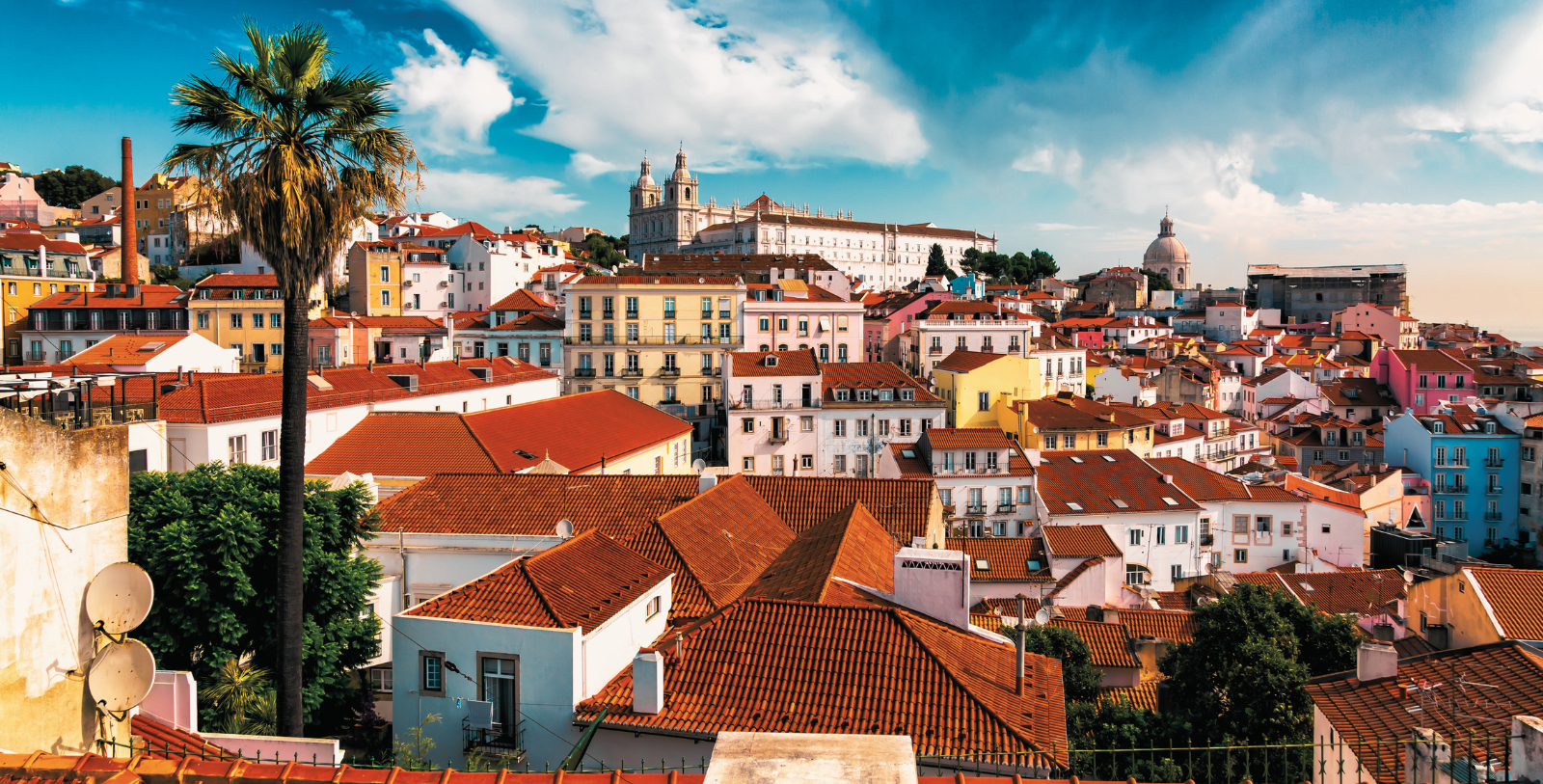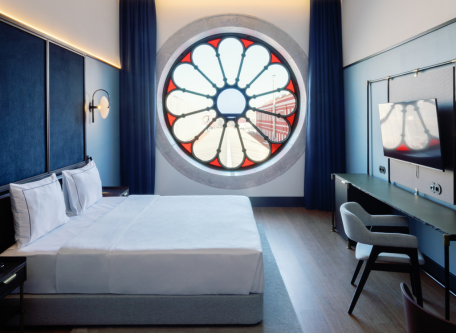Receive for Free - Discover & Explore eNewsletter monthly with advance notice of special offers, packages, and insider savings from 10% - 30% off Best Available Rates at selected hotels.
explore
-
Explore the atmospheric neighborhood of Alfama, Lisbon’s oldest and most vibrant district. Home to The Editory Riverside Hotel as well as some of the city’s most iconic and storied buildings, like the Panteão Nacional (National Pantheon) and São Vicente de Fora Church, this timeworn village within a city is the historic soul of Lisbon. A labyrinthine maze of cobblestone alleyways, side streets, and staircases peppered with red-roofed buildings in shades of crisp white, baby blue, soft pink, and sunny yellow, Alfama is decidedly photogenic and a wanderer’s dream. After strolling beneath wrought-iron balconies bedecked with drying laundry and potted flowers, meander uphill to its crowning glory: the Castelo de São Jorge (Saint George’s Castle). As Alfama’s highest point, this ancient fortress offers a stunning view of the city and the Tagus River beyond. For guests who would rather not explore on their own or those who are simply looking to get a lay of the land before setting out separately, a guided walking tour led by the hotel’s Front Office team is available every Wednesday, starting at 10:00 AM and lasting for approximately two-and-a-half hours.
-
Trace the history Portugal’s famed azulejo tiles at the Museu Nacional do Azulejo (National Tile Museum). Located a short five-minute drive or leisurely 18-minute stroll from The Editory River – Santa Apolónia, this stunning museum is a monument to the country’s exquisitely hand-painted ceramic masterpieces. Although these cobalt- and alabaster-hued works of art adorn walls throughout the country, the collection on display at this treasure trove is a testament to the far-reaching spectrum of scenes depicted in azulejos. Even the museum building itself, known as the Madre de Deus Convent, is every bit as breathtaking as the artwork within, with its opulently gilded chambers punctuated by impressive paintings and pops of white and blue.
-
Take in the twin treasures of the Panteão Nacional (National Pantheon), also known as the Church of Santa Engrácia, and the nearby Mosteiro de São Vicente de Fora. Perched atop a hill just across the street from one another, these beautiful churches are emblematic landmarks of historic Lisbon’s cityscape. Built in 1582, the centuries-old São Vicente de Fora Monastery is the royal resting place of several Portuguese monarchs, including every king who reigned between 1640 to 1910, and home to the most expansive collection of baroque tiles in the world. Although construction only finished in 1966, the National Pantheon was centuries in the making, built to replace a church that was desecrated during a 1630 robbery. As the story goes, the Jewish man convicted of the crime was innocent, and, in his last dying act, he cursed the building of the replacement, which began back in 1682. If their fascinating histories were not reason enough to visit, both buildings also boast sweeping vistas of the city: From the dome of the National Pantheon and the rooftop of the São Vicente de Fora Monastery.
-
Embark on an exclusive journey into the annals of history at the Galerias Romanas, or Roman Galleries. Thought to be left over from the days of Caesar Augustus’ reign as the first Roman emperor, this ancient city beneath the streets of Lisbon is a passageway to the past. Originally lost to history, the subterranean village of stone chambers and bridges was serendipitously unearthed by workers cleaning up debris in 1771, following a devastating earthquake in 1755. Inaccessible during most of the year due to flooding, these Roman ruins are open to the public for a few days each year during April and September.






























